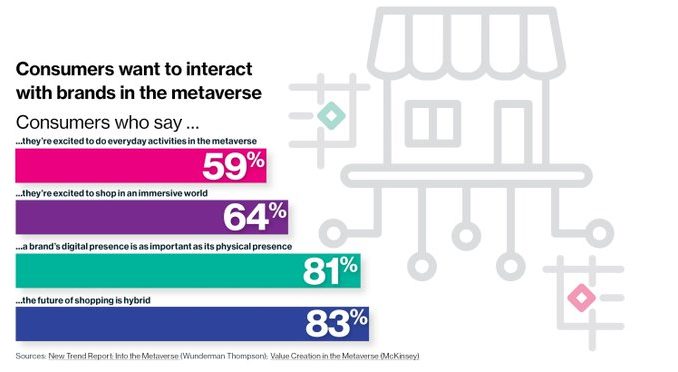
Here’s a thought experiment: It’s just a few years from now, and you’re shopping for new sneakers. You get a mobile notification from your favorite retailer—a pair you’ve been eyeing is on sale. You promptly grab your VR glasses and step into a digital representation of the store, where you design your fully personalized shoes, complete with custom colors. An AI avatar joins you for a jog around a virtual neighborhood that looks just like yours, answering questions along the way. You remove the glasses, consider the purchase, and ultimately hit “buy” several hours later while browsing on your desktop. When you pick up the order at the mall, they’re a perfect fit. Better yet—your avatar is getting the exact same pair.
This scenario outlines a very near future omnichannel customer experience (CX), seamlessly integrating several different physical and digital retail modes. Today, customer interactions happen via mobile, desktop, email, artificially intelligent chatbots, social messaging and more, but in the metaverse, customer touchpoints will be even more immersive and connected.
“The metaverse is going to be available in a number of different ways—VR/AR glasses, smartphones, tablets and PCs, chat rooms with video, but also probably via up-and-coming things like holograms, digital signage, digital assets, and digital content,” says Ramon Llamas, research director for IDC’s augmented reality/virtual reality (AR/VR) team.
There’s been a lot of buzz lately about companies “migrating” to the metaverse, but this is a bit of a misnomer. Brands are not as much moving to the metaverse as they are expanding into it—connecting it with their traditional, two-dimensional channels. Still, the potential for the metaverse to reshape how customers and brands engage can’t be overstated. Over the next decade, the metaverse will transform CX in the same way e-commerce shook up retail in the 1990s and mobile reimagined social interactions in the early 2000s.
